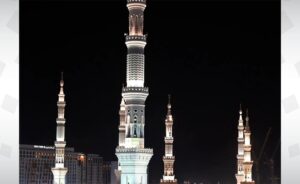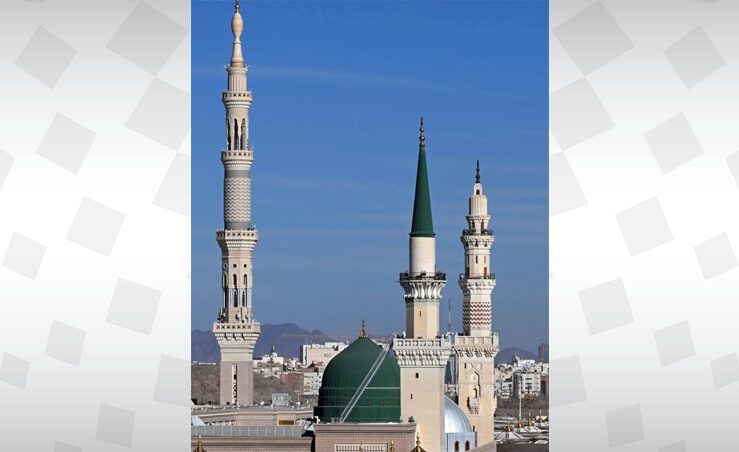Madinah(WNAM Monitoring): The Prophet’s Mosque in Madinah is adorned with minarets visible to visitors from all directions of the city, accompanied by outstanding nighttime illuminations that reflect the care and attention given to the mosque and its architecture.
The ten minarets of the Prophet’s Mosque constitute an Islamic architectural landmark that has undergone numerous enhancements and additions over the ages, resulting in this magnificent appearance. They represent a form of Islamic architectural art that seamlessly blends with the mosque’s components, according to the Saudi Press Agency (SPA).
The concept of minarets in the Prophet’s Mosque originated during the time of the Prophet Mohammed (PBUH) when Bilal ibn Rabah called for prayer from the roof of the nearest house, marking the early use of minarets.
Later, during the Umayyad Caliphate under Al Walid ibn Abd Al Malik’s rule, significant expansion work was carried out, including the construction of four minarets at each corner of the mosque, representing the initial minarets of the Prophet’s Mosque.
The Prophet’s Mosque has undergone various improvements throughout history, with significant expansions during the era of the Saudi state to accommodate increasing numbers of worshipers.
The late King Abdulaziz Al Saud carried out improvements between 1370-1375 AH, retaining two minarets on the southern side while constructing two new ones on the northern side, each reaching a height of seventy meters.
Each minaret consists of four floors, with the first being square-shaped, extending above the mosque’s surface and ending with a square balcony supported by stalactites. The second level is octagonal, adorned with arches terminating in a triangular shape, and surmounted by a balcony. The third and fourth levels are circular, embellished with colored pendants, columns, and arches, ending with balconies.
From 1406 AH to 1414 AH, the expansion continued, adding six new minarets reaching a height of 104 meters, bringing the total to ten. These new minarets complemented the architecture of the initial Saudi expansion.
The Saudi expansions continued, with the largest expansion in the history of the Prophet’s Mosque in late 1434 AH, increasing its capacity to accommodate up to two million worshippers. This project stands as the largest in the history of the mosque and a significant Islamic event globally.
Under the leadership of the Custodian of the Two Holy Mosques, King Salman bin Abdulaziz Al Saud, the dedication to serving the Two Holy Mosques continues. The major expansion project of the Prophet’s Mosque and its related projects serve Islam, Muslims worldwide, and the visitors of Madinah.

